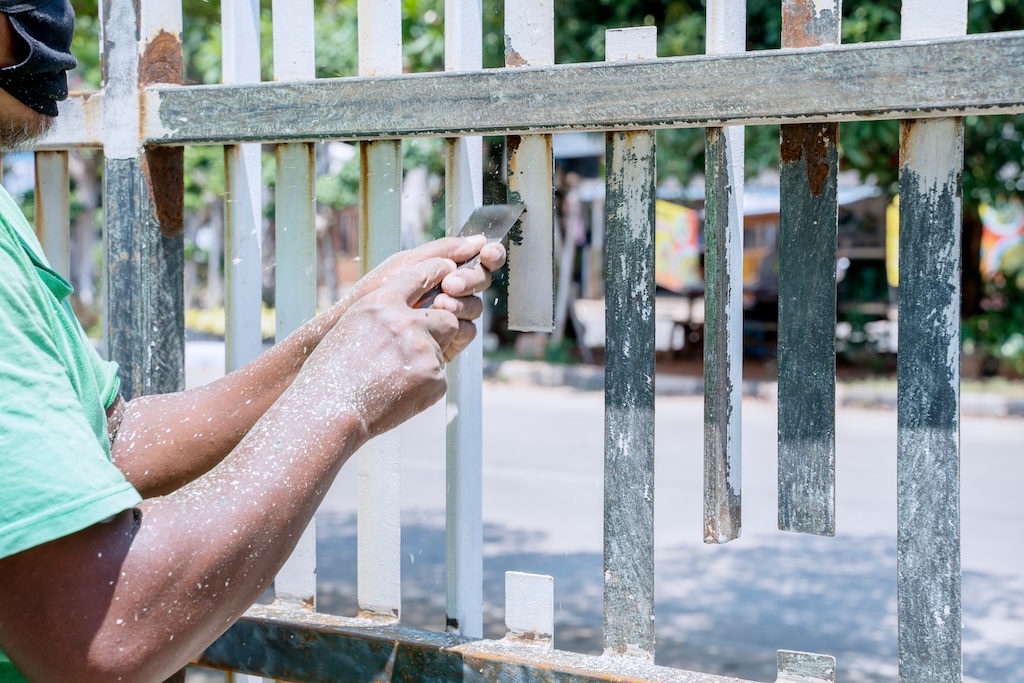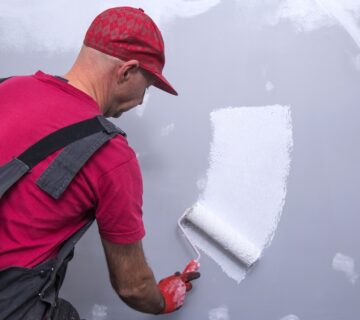Removing stubborn paint can be a daunting task, especially when standard methods fall short. Professional paint removal techniques, however, can effectively tackle even the most challenging cases. In this blog, we’ll explore some professional techniques for removing stubborn paint, providing insights for those facing particularly tough paint removal projects. These techniques overcome the limits of DIY methods and deliver clean, efficient results.
Heat Gun Method
One of the most effective professional techniques is using a heat gun. This method involves applying controlled heat to soften the paint, making it easier to scrape away. It’s particularly useful for thick, old layers of paint but requires careful handling to avoid damaging the underlying surface. The heat must be applied at a distance that is close enough to soften the paint but far enough away to prevent damage. Additionally, it’s crucial to work in small sections to prevent overheating and to have a scraper ready to remove the softened paint promptly.
Chemical Paint Strippers
Professional-grade chemical paint strippers are effective at removing extremely stubborn paint, especially on surfaces that cannot tolerate heat. These potent formulas can dissolve even the most resilient paints. However, one must use them cautiously, following all safety guidelines to protect skin and eyes and ensure proper ventilation. It’s also essential to choose a product that’s appropriate for the paint and surface material you’re working with. Prior to application, conduct a small test patch to ensure compatibility and effectiveness.
Power Sanders and Abrasive Blasting
Power sanders and abrasive blasting techniques are often used in professional settings. These methods are fast and efficient but can be too harsh for some surfaces. They are best suited for exterior projects or situations where preserving the fine details of the surface is not a primary concern. When employing these methods, it’s crucial to wear the proper protective equipment, as they can generate a significant amount of dust and debris. Additionally, always start with the lowest abrasive grit or pressure setting to avoid unnecessary damage to the surface.
Peel Away Techniques
Peel away products are another professional solution, especially for delicate surfaces. These products are applied to the paint, covered with a special paper, and left to react. Once the reaction occurs, the product and paint can be peeled away together, often in one piece. This technique minimizes the risk of damage and is particularly effective for removing layers of paint in one go. However, it’s essential to follow the manufacturer’s instructions carefully and to test the product on a small, inconspicuous area before full application.
Rotary Tools and Scrapers
Rotary tools and specialized scrapers are useful for detail-oriented work, especially in areas with intricate designs or moldings. These tools require skill and precision but can effectively remove paint without damaging delicate surfaces. They offer the ability to target small areas and work carefully around detailed work that other methods might compromise. Additionally, use gentle pressure and let the tool do the work to avoid gouging or scratching the surface.
Safety First
Regardless of the technique used, professionals prioritize safety. This includes using protective gear and ensuring proper ventilation, especially when dealing with lead-based paints or potent chemicals. It’s crucial to assess the risks and prepare accordingly, ensuring that the work area is safe for both the professional and the inhabitants of the home. Moreover, always dispose of paint waste according to local regulations and guidelines to minimize environmental impact and health risks.
When to Call a Professional
For those facing a particularly challenging paint removal task, or when dealing with historic or valuable surfaces, it may be best to call in a professional. They bring experience, expertise, and access to specialized tools that can make a significant difference in the outcome of the project. A professional’s assessment can also prevent damage that might result from choosing the wrong method or product. Additionally, professionals can provide valuable advice on surface preparation and follow-up treatments to ensure a successful paint removal process.
Final Thoughts
Removing stubborn paint requires a combination of the right techniques, tools, and safety measures. By understanding and applying these professional methods, even the most challenging paint removal projects can be tackled effectively. Remember to take your time, prioritize safety, and don’t hesitate to seek professional assistance when needed. With patience and diligence, you can achieve exceptional results and restore your surfaces to their former glory. For those seeking professional advice or services for their paint removal needs, visit our website at sisupainting.com and explore our blog at sisupainting.com/blog.





No comment